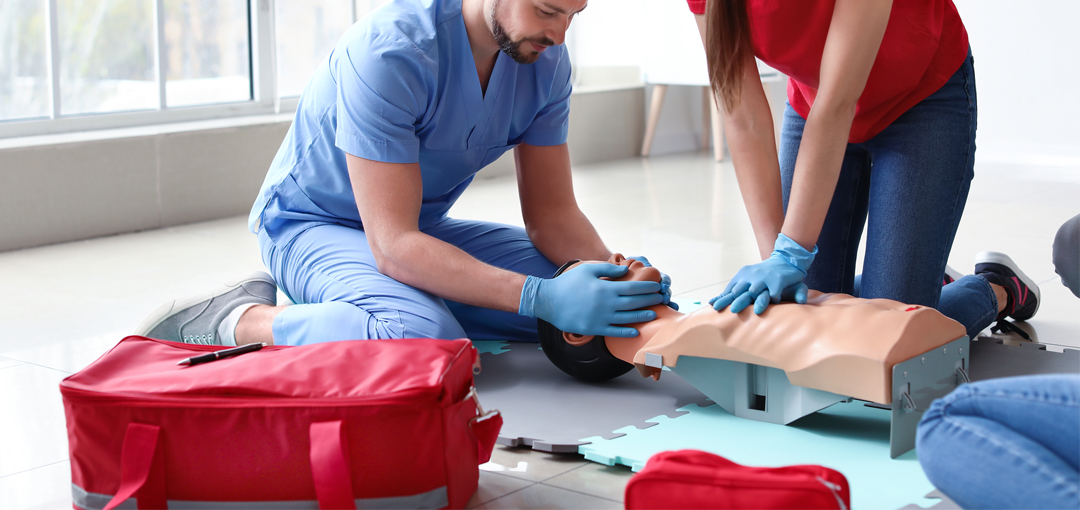What Do You Learn In CPR And First Aid Training?
What Do You Learn In CPR And First Aid Training?
September 4, 2023 |
In times of emergencies, having the knowledge and skills to administer CPR and first aid can be the difference between life and death. CPR (Cardiopulmonary Resuscitation) and first aid training equip individuals with the tools and techniques necessary to respond effectively in critical situations. Whether you’re a healthcare professional, a parent, a teacher, or simply a concerned citizen, undergoing CPR and first aid training can empower you to take immediate action and provide essential aid until professional medical help arrives. In this article, we will explore the key aspects covered in CPR and first aid training programs, highlighting the valuable skills participants acquire to become potential lifesavers.
Basic Life Support (BLS) Procedures
One of the fundamental elements of CPR and first aid training is learning Basic Life Support (BLS) procedures. Participants are educated on the proper techniques to initiate CPR, which involves chest compressions and rescue breaths. BLS includes understanding the correct hand placement, compression depth, and rhythm for effective chest compressions. Additionally, participants learn how to open the airway, provide rescue breaths, and use automated external defibrillators (AEDs) to deliver electric shocks to restart the heart’s rhythm.
Recognition of Cardiac Arrest and Stroke
Recognizing the signs of cardiac arrest and stroke is crucial for providing timely assistance. CPR and first aid training teach participants to identify the symptoms of these life-threatening conditions, such as sudden loss of responsiveness, absence of breathing, or slurred speech. Being able to recognize these symptoms promptly enables individuals to initiate appropriate actions, including starting CPR or calling for professional medical help.
Choking Rescues
Choking can occur in various situations and can lead to respiratory distress or even unconsciousness if not treated promptly. CPR and first aid training cover techniques to help choking victims of all ages, including infants, children, and adults. Participants learn how to administer abdominal thrusts (Heimlich maneuver) and back blows to dislodge the obstructing object and restore normal breathing.
Wound Care and Injury Management
In addition to medical emergencies, CPR and first aid training also address common injuries and wound care. Participants gain insights into proper wound cleaning, dressing, and bandaging techniques. This knowledge proves invaluable in scenarios where immediate medical attention may be unavailable, allowing individuals to minimize infection risk and promote faster healing.
Burns, Fractures, and Medical Emergencies
CPR and first aid training extend beyond cardiac events and cover a wide range of medical emergencies. Participants are taught how to manage burns, assess fractures, and respond to seizures, allergic reactions, diabetic emergencies, and more. Understanding how to stabilize a person’s condition and provide comfort until professional help arrives contributes to their overall well-being.
Safety Measures and Accident Prevention
Prevention is a key aspect of CPR and first aid training. Participants learn about potential hazards in different environments and acquire skills to mitigate risks. This includes understanding the importance of using personal protective equipment (PPE), practicing proper hygiene, and creating a safe environment at home, workplace, or public spaces. By implementing safety measures and promoting accident prevention, individuals can contribute to the well-being of their communities.
CPR and first aid training provide essential life-saving skills that empower individuals to respond confidently and effectively in emergencies. From mastering BLS procedures and recognizing cardiac arrest symptoms to managing injuries and practicing accident prevention, participants become equipped with a diverse skill set that can make a significant difference during critical moments. Whether it’s administering CPR, assisting a choking victim, or providing immediate care for various injuries, the knowledge gained from these training programs transforms ordinary individuals into potential lifesavers.
In a world where unforeseen accidents and health crises can happen at any time, investing in CPR and first aid training is a proactive step towards ensuring the safety and well-being of oneself and those around them. These courses not only instill practical skills but also cultivate a sense of responsibility and preparedness. Ultimately, CPR and first aid training serve as a reminder that everyone can play a role in preserving human life by being educated, attentive, and ready to act when it matters most.
Continuous Training and Community Impact
It’s important to note that CPR and first aid training are not one-time skills; they require practice and periodic refreshers to maintain proficiency. Many organizations and institutions offer recertification courses to ensure that individuals stay up-to-date with the latest techniques and guidelines.
Moreover, the impact of CPR and first aid training goes beyond individual preparedness. Communities with a higher number of trained individuals are better equipped to handle emergencies collectively, creating a safer and more resilient environment for everyone. By participating in CPR and first aid training, individuals contribute to a culture of safety and care that extends far beyond their immediate circle, potentially saving countless lives in the process.
